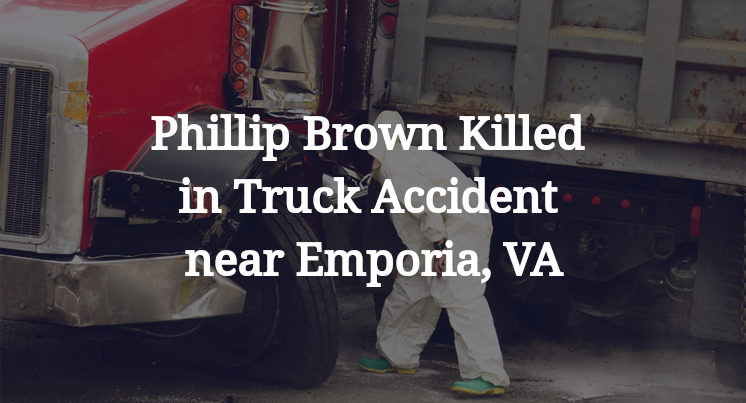Phillip Brown Killed in Truck Accident near Emporia, VA
Greensville County, VA — May 19, 2025, Phillip Brown was killed in a truck accident at about 11:40 a.m. on Brink Road near Fountain Creek Road.
Authorities said a westbound 1997 GMC Sonoma crashed into the back end of a 2007 International logging truck after another vehicle slowed to make a left turn onto Fountain Creek Road.

GMC driver Phillip Lewis Brown, 80, died in the crash southwest of Emporia, according to authorities.
Authorities have not released any additional information about the Greensville County crash at this time. The accident is still under investigation.
Commentary by Attorney Michael Grossman
When people hear that a driver rear-ended a truck, most jump to the same conclusion: the person in the back must be at fault. And while that’s often true in passenger vehicle crashes, things are a lot more complicated when a commercial truck is involved, especially on a rural road where traffic is unpredictable and space is limited.
That complexity is exactly why a crash like the one in Greensville County deserves more than a passing glance. According to reports, the driver of a GMC pickup hit the rear of a logging truck after another vehicle slowed to make a turn. The pickup driver didn’t survive. At this point, authorities haven’t said much more, but even with limited details, it’s worth looking at the bigger picture of how truck crash investigations should work, and how they sometimes fall short.
A lot of folks think fault in a rear-end crash begins and ends with the trailing driver. But when the vehicle being hit is a commercial truck, especially one hauling a load of logs, that kind of thinking doesn’t hold up. These trucks have a responsibility to operate safely, which includes making sure they’re visible, maintaining a safe speed and leaving enough room for traffic patterns like turns and slowdowns.
For example, if the truck slowed suddenly or failed to maintain proper spacing after the vehicle in front of it began turning, that matters. If it didn’t have working brake lights, reflective markings or other required safety features, that matters too. And if the truck was loaded in a way that made it harder to stop or increased the risk of rear-end collisions, that’s not just a safety concern. It’s a legal one.
In short, just because a commercial vehicle was hit from behind doesn’t mean it did nothing wrong. That assumption has led many investigators and even courts to overlook the real causes of crashes like this.
One of the biggest problems with how these crashes are often handled is that authorities may not go beyond what they see at the scene. If there are skid marks, they’ll measure them. If there’s damage, they’ll photograph it. But unless someone pushes for more, no one checks the truck’s maintenance records, training logs or even whether the driver should have been behind the wheel at all.
Over the years, I’ve seen too many cases where surface-level investigations missed deeper issues, like poor hiring practices, bad equipment or companies that cut corners to meet deadlines. That kind of evidence doesn’t show up in a ditch or on the pavement. You have to dig for it.
Rear-end crashes involving big trucks often look simple, but they rarely are. When a driver is killed in a crash like this, it’s not enough to say, “They hit the truck, so they must be to blame.” The real question is: what was the truck doing, how was it being operated and did its driver and employer follow the rules that are meant to keep everyone safe?
Until we have answers to those questions, it’s far too early to point fingers. But it’s the job of investigators, and anyone who takes road safety seriously, to ask them.

“These are essential reads for anyone dealing with the aftermath of a truck wreck”– Attorney Cory Carlson